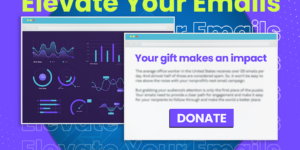We want you to ask us how best to prepare your print job. And we want you to feel comfortable calling us at any time to ask just “one more question.” The more chances you give us to help you, the more likely we can help you print a better product. As we give you the quality and service you like, we will start to build a long-term relationship that benefits us both.
So please ask us any questions, especially the ones you are embarrassed to ask. Those questions are often the key to producing a good print job the first time. We want you to ask questions like “What is the difference between spot and process colors?” or “Why doesn’t my three-fold brochure back up nicely when I do it?”
To help start the process, we came up with several common questions and their answers. Hopefully, seeing these questions will prompt you to ask your own.
Question: When should I call you to discuss an upcoming print job?
Answer: Call us as soon as possible. The earlier we discuss a job, the more time we have to prepare. For instance, a job with a complicated or fancy binding might take more time. The earlier you call us, the sooner you know how long to budget for time. And we can’t tell you about a better, cheaper or smarter way to do something unless we know about the job you’re doing.
Question: What is the difference between spot and process colors?
Answer: Process colors use varying amounts of the three subjective primary colors (cyan, magenta and yellow) plus black ink to produce the illusion of true “photographic” color. Spot colors are any number of inks used to make that exact color or shade on the page. Spot colors are commonly used for brochures and newsletters. We use process colors whenever you want to show people and things “as they are.” Advertising, marketing and packaging pieces often require process colors.
Question: Why doesn’t my three-fold brochure back up nicely when I do it?
Answer: Probably because you set it up as three equal-width panels. A well-built three-fold brochure has two equal-width panels and one slightly narrower one to fit inside the fold. To turn an 8.5 x 11-inch sheet of paper into three folds, two of the folds should be 3.7 inches wide, and the short panel should be 3.6 inches wide. Because of the panel-width variation, you need to build a three-fold brochure in QuarkXPress, Adobe InDesign or another page layout program. Word processing software does not have the level of control necessary.
Question: What kinds of issues do people usually forget to ask about?
Answer: Finishing options and turnaround times are two of the common print issues people forget to discuss up front. For instance, if you don’t tell us that you want something folded until after we have printed it, it will cost you extra time. If we know up front, we can sometimes fold pieces as they come out of the press, thereby saving time.
Question: When does paper matter, and how can I learn more about it?
Answer: Paper always matters. Paper is probably the biggest variable in a print job. The weight, finish and style of a paper change the way printed ink looks and how we can fold or cut the paper. Call us or set up an appointment so we can discuss paper with you and show you different samples.
More Insights to Enjoy:
+ Tips on Building a Better Brochure
+ 7 Ways to Help Stretch Your Print Dollars
© Action Graphics, 2011. Article taken from our e-Newsletter, Action Insights for your Inbox. Sign up today to receive future issues of our newsletters.



